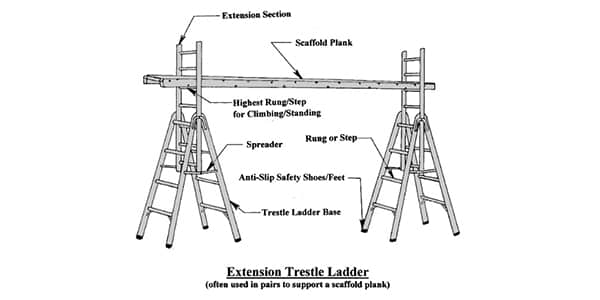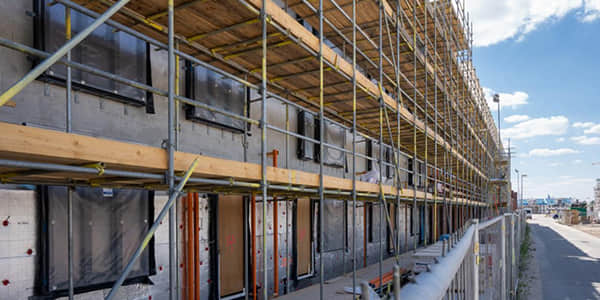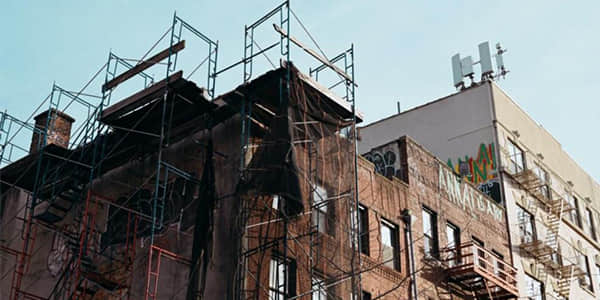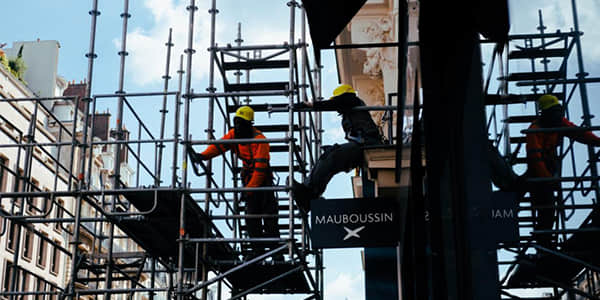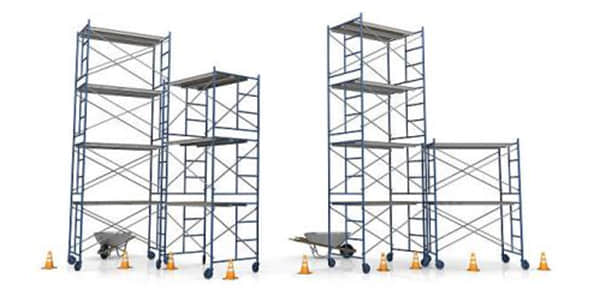Scaffolding plays an important role in the construction industry as a temporary building that supports workers, equipment, and materials at varying heights.. Ensure the safety and efficiency of construction projects by provide the workers with a firm platform to work on. Different types of scaffolding are available, each with its unique features and applications. In this post, we're going to look at the different types of scaffolding, their benefits, and the factors to consider when choosing the most suitable option for a project.
Types Of Scaffolding In Construction
- Single Row Scaffolding
- Double Row Scaffolding
- Cantilever Scaffolding
- Suspended Scaffolding
- Trestle Type Scaffolding
- Tube And Coupler Scaffolding
- Patented Scaffolding
- Modular Rionglock Scaffold
- Mobile Frame Scaffolding
-
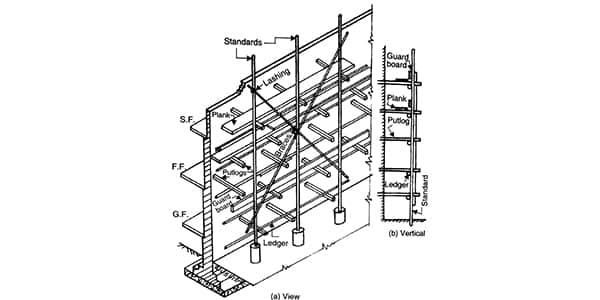
Single Row Scaffolding
Single scaffolding, also known as bricklayer's scaffolding, is the most basic type. It consists of a single row of vertical standards, placed about 1.2 meters away from the wall. Horizontal ledgers link the standards, forming the working platform. Single scaffolding is commonly used for brickwork or masonry projects.
-
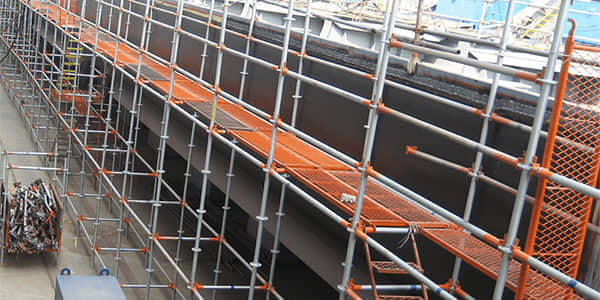
Double scaffolding, also called construction steel independent scaffolding, provides more stability compared to single scaffolding. It consists of two rows of vertical standards, positioned parallel to the wall. Horizontal ledgers and cross braces connect the standards on both sides. This type of scaffolding is suitable for heavy construction and stone masonry work.
-
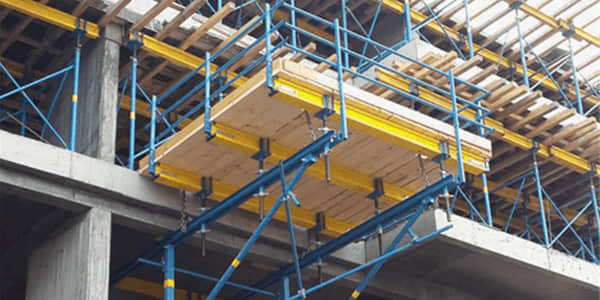
Cantilever Scaffolding
Cantilever scaffolding is commonly used when the ground near a building is not suitable for foundation support. It involves projecting the scaffolding structure from the building's floors or balconies. Cantilever scaffolding requires careful design and engineering to ensure stability and safety.
-
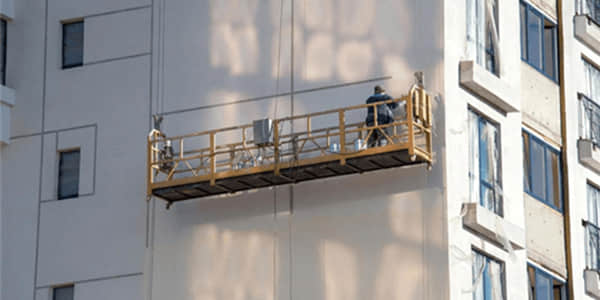
Suspended Scaffolding
Suspended scaffolding, also known as swing stage scaffolding, is suspended from the top of a building or structure using ropes or chains. It allows workers to access elevated areas while working on the exterior surfaces of buildings. Suspended scaffolding is commonly used for tasks such as window cleaning, painting, and facade repairs.
Trestle Type Scaffolding
Trestle scaffolding consists of movable tripods or ladders with horizontal supports. It is a versatile and portable option suitable for low-height tasks. Trestle scaffolding is commonly used for tasks such as painting, plastering, and interior maintenance work.
Structure and Components:
Trestles: These are the main supports, typically made from aluminum or steel, forming an A-frame or similar structure. They are portable and easy to set up.
Platforms: Wooden planks or metal decking that rest on the trestles, providing a working surface. These must be strong enough to support the weight of workers, tools, and materials.
Bracing: Additional supports or braces might be used to stabilize the trestles, especially if they are extended to greater heights or if there's a need for added safety.
Tube And Coupler Scaffolding
Tube and coupers scaffolding, also known as concrete steel tubular scaffolding, is a highly durable and sturdy option. It is constructed using steel tubes and couplers, providing strength and stability. Steel scaffolding is commonly used for heavy-duty construction projects, such as high-rise buildings and bridges.
Structure and Components:
Tubes: Made from steel or aluminum, these are the primary structural members. They typically come in standard lengths, with a common diameter of about 48.3 mm (1.9 inches).
Couplers: These are fittings used to connect the tubes together.
Sole Plates: Large, flat plates under base plates to spread the load over a larger area, especially useful on soft ground.
Ledgers: Horizontal tubes parallel to the face of the building.
Transoms: Horizontal tubes perpendicular to the face of the building, supporting the scaffold boards.
Scaffold Boards: Wooden planks or metal decking used as the working platform.
Patented Scaffolding
Patented scaffolding refers to prefabricated scaffolding systems that are commercially available. These systems come with standardized components and are easy to assemble and dismantle. Patented scaffolding is known for its convenience, versatility, and time-saving benefits.
Modular Rionglock Scaffold
Modular steel ringlock scaffolding is a type of scaffolding that uses standardized modules or components. These modules can be easily interconnected to create various scaffold configurations. Modular scaffolding offers flexibility, adaptability, and efficiency in construction projects.
Structure and Components
Standards (Verticals): These are the vertical posts with a series of rosettes (rings) spaced at regular intervals, typically 50 cm (19.7 inches) apart. These rosettes are where horizontal and diagonal braces are attached.
Ledgers (Horizontals): Horizontal tubes that connect to the rosettes on the standards, forming the scaffold's framework.
Diagonal Braces: Used to provide additional stability and to prevent the scaffold from twisting or swaying.
Base Collars: Fitted at the bottom of the standards to provide a secure base, often with base plates or castors.
Platforms: Scaffold boards or metal decking that rest on the ledgers to create working levels.
Mobile scaffolding, also known as rolling scaffolding or tower scaffolding, is equipped with wheels or casters for easy mobility. It allows workers to move the scaffold easily within a worksite without the need for dismantling and reassembling. Mobile scaffolding is commonly used for tasks that require frequent repositioning, such as painting, maintenance, and installation work.
Structure and Components:
- Frames: These are the basic structural units, usually made of steel or aluminum, forming the vertical supports. They can be square, rectangular, or even A-frame-shaped.
- Cross Braces: Provide stability by connecting the frames at various points.
- Platforms: Wooden planks, aluminum planks, or metal decking that create the working levels. These platforms often have trapdoors or hatches for easy access between levels.
- Castors: Wheels or castors are attached to the base of the scaffold, allowing it to be rolled from one location to another. These castors can be locking to ensure stability when the scaffold is in use.
- Outriggers or Stabilizers: Sometimes used to extend the base width for added stability, particularly when the scaffold is extended to higher heights.
- Guardrails: Safety rails installed at the working platforms to prevent falls.
- Toe Boards: Small boards or panels at the edge of platforms to prevent tools or materials from falling off.
- Ladders or Built-in Stairs: For accessing higher levels of the scaffold.
Correct Choice Of Scaffolding Type
Load Capacity
- Consider the maximum load capacity of the scaffolding system. It should be able to support the weight of workers, materials, and equipment without compromising stability.
Durability and Stability
- Opt for scaffolding made from high-quality materials that can withstand the demands of the project. The scaffolding structure should be stable and resistant to external factors such as wind, vibrations, and uneven ground.
Flexibility and Adaptability
- Choose a scaffolding system that can be easily adapted to different project requirements. The ability to adjust the height, length, and configuration of the scaffolding will enhance its usability.
Common Uses for Scaffolding
- Scaffolding finds applications in various industries and projects, including:
Construction & Maintenance Projects
- Scaffolding is extensively used in construction and maintenance projects, providing a safe working platform for workers to carry out tasks such as brickwork, plastering, painting, and electrical installations.
Painting and Cleaning
- Scaffolding is crucial for tasks that involve painting or cleaning buildings, bridges, or other structures. It allows workers to access all areas efficiently and ensures a stable platform for carrying out these tasks.
Events and Entertainment Industry
- Scaffolding is commonly used in the events and entertainment industry for constructing stages, grandstands, lighting structures, and other temporary installations. It provides a stable and secure framework for accommodating performers, equipment, and audiences.
Scaffolding Advantages In Construction
Enhancement of worker safety
- The safe and stable working platform provided by the scaffold effectively reduces the risk of accidents and falls. It allows workers to perform their tasks with confidence and minimizes the chances of injuries.
Increased Productivity and Efficiency
- By providing easy access to elevated areas, scaffolding helps workers complete their tasks more efficiently. It eliminates the need for ladders and makeshift arrangements, saving time and effort.
Accessibility to Hard-to-Reach Areas
- Scaffolding enables workers to access hard-to-reach areas. It allows for thorough inspections, repairs, and installations in elevated or confined spaces.
Best Practices For The Erection And Use Of Scaffolding
Proper Inspection and Maintenance
- Inspect scaffolding regularly for any signs of damage, wear, or instability. Make any necessary repairs or replacements in a timely manner. Follow the manufacturer's maintenance guidelines.
Adequate Training for Workers
- Provide comprehensive training to workers on scaffold assembly, usage, and safety protocols. Ensure they are familiar with the specific scaffolding system being used and understand the risks involved.
Adherence to Safety Guidelines and Regulations
- Comply with local safety regulations and guidelines specific to scaffolding. This includes ensuring proper installation, use of personal protective equipment, and implementation of fall protection measures.
Summarize
Scaffolding is an integral part of the construction industry, providing a safe and efficient way of accessing elevated areas in a variety of engineering projects.. Understanding the different types of scaffolding and their applications allows construction professionals to choose the most suitable option for their specific requirements. By prioritizing safety, considering load capacity and durability, and following best practices, scaffolding can significantly enhance worker safety, productivity, and overall project efficiency.
FAQ
Why build scaffolding?
Scaffolding provides a temporary structure that gives support to workers, tools, and materials during construction, maintenance, and repair work. It ensures safe access to elevated areas and increases productivity.
Are there any alternatives to scaffolding?
Alternatives to traditional scaffolding include aerial lifts, scissor lifts, and mast climbers. These options provide elevated platforms for workers but have specific use cases and limitations.
Is scaffolding reusable?
Scaffolding can be reusable if properly maintained and stored. Regular inspections, repairs, and adherence to manufacturer guidelines ensure its longevity and reusability.
Related Information
What Ls Instructional Scaffolding -- IRIS
Advantages Of Wooden Scaffold Planks -- RUX
Advantages And Disadvantages Of Single Scaffolding -- QUORA




